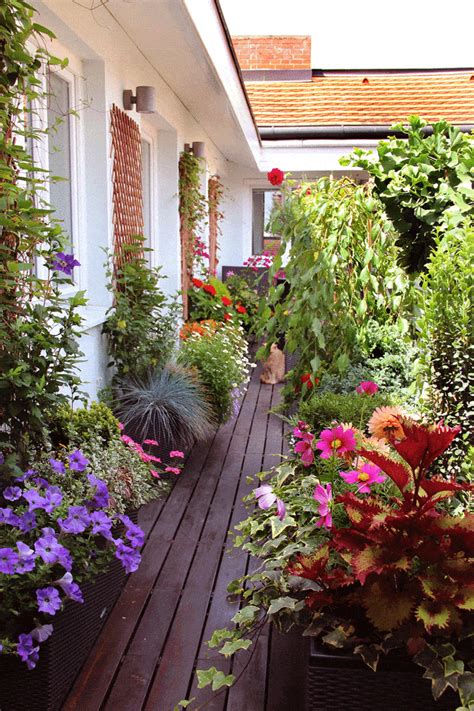Hosting a Successful Balcony Gardening Workshop: A Comprehensive Guide
Balcony gardening is a creative and accessible way to bring nature into urban spaces. Hosting a balcony gardening workshop can inspire others to transform their small outdoor areas into flourishing green havens. This guide will provide essential tips for organizing a successful balcony gardening workshop, from key concepts to practical implementation, while ensuring clarity, accessibility, and engagement.
Introduction
Urban living often limits access to outdoor gardening spaces, but balcony gardening offers a solution. By offering a workshop on balcony gardening, you can empower individuals to explore container gardening, foster creativity, and beautify their homes. Whether you’re a gardening enthusiast or an educator, hosting a workshop is a rewarding community activity that can inspire sustainable practices and increase gardening education among participants.
Key Concepts
- Container Gardening: The practice of growing plants in containers such as pots, planters, or hanging baskets, essential for balcony gardening.
- Urban Gardening: Gardening in urban areas with limited space, often focusing on small-scale, container-based gardens.
- Microclimate Considerations: Balconies often have unique climates due to sun exposure, wind, and shade, impacting plant choices and care.
- Water Management: Proper drainage and watering techniques are crucial for container gardens to thrive in a balcony setting.
- Plant Selection: Choosing the right plants for small spaces and containers, including herbs, flowers, and vegetables suited to varying light conditions.
Historical Context
Balcony gardening has roots in ancient civilizations where small-space gardening was practiced in dense urban environments. In modern times, it gained popularity in the mid-20th century as cities grew and green spaces diminished. The environmental movements of the 1970s and 1980s further promoted urban gardening, and today, balcony gardening is celebrated as a solution to modern urban challenges like food security and air quality improvement.
Current State Analysis
In today’s urban centers, balcony gardening is more popular than ever. With increasing interest in sustainable living, gardening workshops are an effective way to share knowledge and build community. Participants are often looking for practical, hands-on advice on how to maximize their small spaces, create aesthetically pleasing gardens, and grow their own food. Current trends emphasize organic gardening, sustainable practices, and the use of local, hardy plants.
Practical Applications
A well-structured workshop should provide participants with the skills to start and maintain their own balcony gardens. Key practical applications include:
- Container Selection: Choose containers based on size, drainage, and material to suit different plants and balcony conditions.
- Soil Preparation: Teach how to select the right soil mix for containers, including considerations for moisture retention and aeration.
- Planting Techniques: Demonstrate how to plant and arrange plants effectively for aesthetic appeal and space efficiency.
- Watering Systems: Explore manual and automated watering methods, considering balcony access to water and drainage issues.
- Pest Control: Provide eco-friendly solutions for common balcony gardening pests, such as aphids and spider mites.
Case Studies
| Case Study | Description | Outcome |
|---|---|---|
| City Greens Workshop (Brooklyn, NY) | Focused on growing vegetables in small spaces using repurposed containers. | Participants created productive gardens that contributed to local food sharing programs. |
| Eco Balcony Initiative (London, UK) | Participants learned about sustainable balcony gardening practices, including composting and rainwater harvesting. | Resulted in a network of eco-conscious urban gardeners reducing their environmental impact. |
| Vertical Garden Workshop (Sydney, AUS) | Emphasized vertical planting techniques for maximizing small spaces. | Participants successfully incorporated vertical gardens into their balconies, enhancing outdoor beauty and increasing plant diversity. |
Stakeholder Analysis
To create a successful balcony gardening workshop, it’s important to consider the following stakeholders:
- Participants: Urban dwellers looking for sustainable ways to improve their living spaces with greenery.
- Local Community Groups: Organizations interested in fostering community engagement and environmental education.
- Environmental Advocates: Supporters of sustainable urban living practices that can address climate change and biodiversity loss.
- Urban Developers: City planners interested in promoting greener, more livable urban environments.
Implementation Guidelines
To ensure the success of a balcony gardening workshop, follow these implementation guidelines:
- Venue Selection: Choose a space that has both indoor and outdoor areas, preferably with balconies for live demonstrations.
- Materials Preparation: Ensure enough containers, soil, plants, and gardening tools are available for all participants.
- Schedule: Structure the workshop with both theoretical and practical components, including time for participants to set up their own container gardens.
- Post-Workshop Support: Offer follow-up resources, such as access to gardening communities, instructional videos, or gardening tip sheets.
Ethical Considerations
Urban gardening workshops should promote ethical practices, such as:
- Sustainable Sourcing: Encourage the use of organic, local, and non-invasive plants.
- Environmental Impact: Minimize the carbon footprint by using eco-friendly materials and promoting water conservation.
- Community Inclusivity: Ensure the workshop is accessible to all, regardless of socioeconomic status or gardening experience.
Limitations and Future Research
Despite the growing popularity of balcony gardening, several challenges remain, including limited space, access to sunlight, and the difficulty of growing certain plant species in confined environments. Future research could focus on innovations in vertical gardening, hydroponics, and smart irrigation systems to further improve urban gardening practices. Additionally, more studies on the social and mental health benefits of balcony gardening could help promote its wider adoption.
Expert Commentary
Balcony gardening workshops are more than just educational events; they are catalysts for community building, sustainability, and creativity. By teaching participants the skills they need to start their own urban gardens, we can empower individuals to make their living spaces greener and more beautiful. Workshops like these also contribute to a growing urban gardening movement that has the potential to transform cities into greener, healthier environments.
Maximizing Your Balcony’s Aesthetics with Seasonal Plants
Your balcony can become a vibrant, dynamic space all year round by carefully selecting and rotating seasonal plants. This guide provides actionable gardening ideas for urban dwellers, ensuring a continuous display of colorful blooms while enhancing the overall aesthetic of your outdoor area. From practical advice on plant rotation to aesthetic tips, we cover everything you need to know to create an eye-catching balcony design using nature’s seasonal variety.
Introduction
Urban living often limits access to outdoor spaces, making balconies a vital area for relaxation and visual appeal. With the right combination of seasonal plants, you can create a year-round haven that refreshes both the eyes and the soul. This article offers detailed guidance on balcony gardening, showcasing how to enhance your balcony’s appearance while considering key aspects like plant rotation, decorative gardening, and adapting your plant choices to the seasons.
Key Concepts
- Seasonal plants: Plants that bloom or thrive in specific seasons, ensuring continuous rotation and freshness in your garden.
- Balcony gardening: Growing plants in small outdoor spaces like balconies using containers and compact gardening strategies.
- Plant rotation: The practice of switching out plants to match the changing seasons, maximizing visual appeal.
- Urban gardening: Gardening methods tailored to the spatial and environmental limitations of urban environments, such as balconies.
Historical Context
The tradition of cultivating seasonal plants can be traced back to ancient civilizations where seasonally rotating crops allowed for more sustainable agriculture. Over time, these methods have evolved, especially in urban areas, where balcony gardening has become a popular practice. From ancient rooftop gardens in Mesopotamia to the flourishing courtyard gardens of Renaissance Europe, managing small spaces with seasonally appropriate plants has always played a crucial role in urban living environments.
Current State Analysis
In today’s cities, limited access to nature has spurred the growth of urban gardening trends. Balcony design and urban gardening ideas often prioritize aesthetic value alongside environmental sustainability. The popularity of decorative gardening has seen a rise, with homeowners and apartment dwellers incorporating seasonal plants into their balcony spaces to enhance beauty and ecological diversity. This trend is supported by a growing awareness of how green spaces positively impact mental health and well-being, especially in dense urban settings.
Practical Applications
Creating a balcony garden that thrives all year requires thoughtful plant selection, strategic rotation, and knowledge of each season’s characteristics. Below are practical steps to achieve a vibrant balcony:
- Spring: Plant early bloomers like tulips, daffodils, and hyacinths to add instant color. Pair these with herbs such as mint and basil for greenery and usability.
- Summer: Opt for heat-resistant plants such as marigolds, petunias, and geraniums. Their colorful blooms withstand strong sunlight and dry conditions.
- Fall: Introduce chrysanthemums, pansies, and ornamental kale. These seasonal plants offer vibrant hues while adapting to cooler temperatures.
- Winter: Evergreen shrubs and hardy plants like hellebores and ivy provide structure and color even in frosty conditions.
Case Studies
| Region | Season | Recommended Plants |
|---|---|---|
| Northeast US | Spring | Tulips, Daffodils, Hyacinths |
| Southeast US | Summer | Marigolds, Petunias, Geraniums |
| Midwest US | Fall | Chrysanthemums, Ornamental Kale, Pansies |
| Pacific Northwest | Winter | Evergreen Shrubs, Hellebores, Ivy |
Stakeholder Analysis
The key stakeholders involved in urban balcony gardening include homeowners, renters, and city planners. Each has a vested interest in promoting urban gardening for both aesthetic and environmental benefits. While homeowners may focus on personal relaxation and beautification, city planners often encourage balcony gardening as part of broader sustainability efforts to green cities. Renters, meanwhile, seek easy-to-maintain gardening ideas that improve their living environment without permanent changes.
Implementation Guidelines
To successfully implement a seasonal balcony garden, follow these guidelines:
- Assess the environmental conditions of your balcony: light exposure, wind patterns, and space constraints.
- Choose containers with good drainage and appropriate sizes for your selected seasonal plants.
- Plan for rotation: Ensure that you have a mix of annuals and perennials to keep your balcony blooming year-round.
- Incorporate vertical gardening techniques to maximize space, using trellises, hanging pots, and shelves.
- Maintain a watering schedule that matches seasonal needs, with more frequent watering in summer and less in winter.
Ethical Considerations
When selecting plants for your balcony garden, consider the environmental impact of your choices. Native plants typically require less water and fertilizer, promoting a sustainable urban gardening ecosystem. Avoid invasive species that could disrupt local biodiversity. Additionally, consider using eco-friendly containers made from recycled or sustainable materials to reduce your carbon footprint.
Limitations and Future Research
While seasonal plants offer versatility and aesthetic appeal, maintaining a year-round garden on a balcony presents challenges. Environmental factors like wind and pollution can hinder plant growth, and space constraints limit the size and number of plants you can cultivate. Future research should focus on developing compact, climate-resistant plant varieties that thrive in urban settings. Additionally, advancements in vertical gardening technology could revolutionize how city dwellers utilize small spaces for decorative gardening.
Expert Commentary
According to experts in urban gardening, one of the most exciting aspects of balcony design is its dynamic nature. As seasons change, so does the visual appeal of your balcony. Proper planning and plant rotation not only enhance aesthetics but also promote sustainability. Urban planners and horticulturists are increasingly emphasizing the role of balcony gardens in combating climate change by creating small green spaces that contribute to citywide biodiversity efforts.


